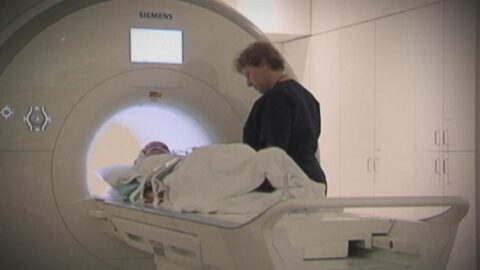
Worldwide, the number of mysterious hepatitis cases under investigation among children has reached 450, the European Center for Disease Prevention and Control said this week.
That’s more than double the number the group reported two weeks ago, and significantly higher than the World Health Organization’s latest count of 348.
Cases of this liver inflammation have been reported in more than 25 countries, though the majority are in the UK (around 160) and the U.S. (around 110). Most of the affected children are under age 5. Of the U.S. patients, more than 90 percent have been hospitalized and 14 percent have had liver transplants. The Centers for Disease Control and Prevention is investigating five pediatric deaths that might be related.
Disease experts aren’t sure what’s behind these cases, though several hypotheses have begun to emerge. The leading theory is an adenovirus, which often causes cold- or flu-like symptoms or stomach problems.
More than half of the U.S. cases tested positive for adenovirus, the CDC said Wednesday. So did around 72 percent of the cases in the UK and 60 percent across Europe.
But it is rare for an adenovirus to impact the liver this severely.
Tissue and liver samples recently taken in the UK do not “show any of the typical features you might expect with a liver inflammation due to adenovirus, but we are awaiting further examination of biopsies,” Dr. Phillipa Easterbrook, a senior scientist at the WHO, said on Tuesday.
Here’s what’s known so far.
What is causing these cases of severe hepatitis?
In general, there can be hundreds of potential causes of hepatitis: Liver inflammation can result from toxins, viruses or contaminated food and water.
But in these recent cases, experts have their eyes on a particular adenovirus, type 41, which has been identified in a majority of cases in Europe and many in the U.S. Adenovirus 41 usually results in an upset stomach, but it isn’t usually associated with hepatitis in otherwise healthy kids.
Dr. Markus Buchfellner, a pediatric infectious diseases fellow at the University of Alabama at Birmingham, was the first to notice the unusual pattern of unexplained hepatitis in kids in the U.S. and report it to the CDC. He and other experts have wondered whether pandemic lockdowns resulted in reduced exposure to adenoviruses in general, perhaps making young kids more vulnerable to them.
But experts also haven’t ruled out the possibility that Covid-19 may be an underlying contributor, since the wave of cases seems to have arisen during the pandemic.
“That’s one of the biggest unanswered questions,” Buchfellner said.
There is no evidence that the coronavirus is directly causing hepatitis in children.
Still, the WHO is also looking at whether a prior Covid infection — even a mild or asymptomatic case — could have somehow prompted kids’ immune systems to react abnormally to otherwise harmless adenoviruses.
“The big focus over the next week is really looking at the serological testing for previous exposure and infections with Covid,” Easterbrook said on Tuesday.
What are common hepatitis symptoms in children?
“The big symptom that made all of these kids different was that they all showed signs of jaundice, which is the yellowish coloration of the skin and eyes,” Buchfellner said.
Beyond that notable symptom of these unusual hepatitis cases, he said, a majority of patients had nausea and vomiting, and experienced profound fatigue and loss of appetite.
Other symptoms can include fever, stomach pain, dark urine and light-colored stool.
How have the children with hepatitis fared long term?
This unusual form of hepatitis could be fatal, though deaths appear to be rare so far. The CDC hasn’t yet determined whether the five U.S. deaths under investigation were indeed caused by hepatitis.
Of the 109 cases under investigation, the CDC said, 14 percent had to undergo a liver transplant. They will need to be on medication for the rest of their lives to make sure their bodies don’t reject the new organ.
The majority of the kids have needed to be hospitalized, but Buchfellner said it was mostly to ensure doctors could monitor them and do more testing.
For the most part, though, the illnesses have been mild. The liver is a robust organ that can often heal itself over time, with proper hydration and nutrition. As such, many of these young patients have recovered fully and continue to do well, Buchfellner said.
“All nine of our kids are doing fine, even those who needed transplants,” he said.
Can this hepatitis illness be prevented with a vaccine?
Some forms of hepatitis can be prevented with routine vaccines, such as those that target hepatitis A and B viruses. But those viruses have been ruled out in these cases, as have the other typical viruses that can cause hepatitis: C, D and E.
There is no publicly available vaccine for adenoviruses, but the U.S. has approved an adenovirus vaccine for military personnel that protects against two subtypes: type 4 and type 7.
Adenovirus 41 is generally spread through fecal matter, making proper handwashing critical, particularly following diaper changes and visits to the bathroom.










Recent Comments